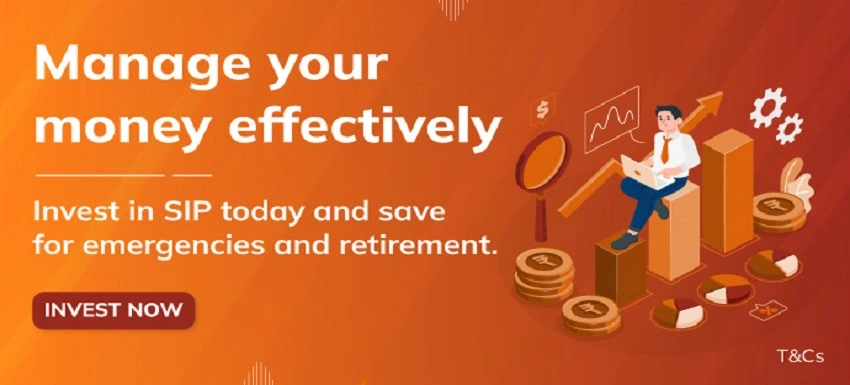THE
ORANGE
HUB
ELSS Mutual Fund: Invest in Tax Saving Mutual Funds

What is ELSS?
ELSS, or Equity Linked Saving Schemes, are mutual funds that invest in equities and allocate some funds to the debt market. They are categorised as tax-saving mutual funds that fall under Section 80C of the Income Tax Act. Under this act, ELSS funds allow you to claim deductions of up to Rs 1,50,000 annually, which can help you save Rs 46,800 in tax.
Features of an ELSS Mutual Fund:
Dual Benefit
ELSS funds are the only type of mutual funds in the Indian market, that give you the dual benefit of a tax rebate and wealth appreciation. Under Section 80C of the Income Tax Act, 1961, one can save Rs 46,800 in a year, as tax deductions. Meanwhile, your funds are funnelled into the equity markets. Given a long enough timeline, they can earn handsome returns for the investor.
Returns can beat inflation
One of the prime advantages of these tax-saving investments is that they have the capacity to beat the rate of inflation, unlike Fixed Deposits and funds in Savings Account, which deliver returns that consistently fail to cross the inflation rate. Being invested in ELSS funds for the long run can deliver great returns, which can beat the inflation rate by a long margin.
Managed by Financial Experts
ELSS Mutual Funds are managed by fund managers who have an impeccable track record of managing portfolios and delivering returns, that trump benchmark performance. Their decisions are based on granular research and detailed analysis, and the pros and cons of every decision is carefully weighed before executing. All of these calculations go a long way in creating wealth for the investor.
Shortest lock in period
Out of all the options that are presented under Section 80C, as a way of availing tax rebates, ELSS Mutual Funds have the shortest lock in period of three years. Investment in these schemes can help the investor preserve and appreciate his wealth over the course of a few years.
ELSS funds come with a compulsory lock-in period of three years, which is the shortest when it comes to 80C options. This lock-in period encourages investors to adopt a long-term investment approach, which allows wealth accumulation and benefits from tax advantages.
In this blog, let’s delve more into ELSS Funds.
How do ELSS Mutual Funds work?
ELSS Mutual Funds, or Equity Linked Saving Scheme, function as tax-saving mutual fund investment options with primary investment in equity markets. Investors allocate funds to ELSS schemes, which are later managed by mutual fund managers, who plan investments in diversified funds.
The unique feature of ELSS funds is their tax-saving benefit under Section 80C of the Income Tax Act, as it gives benefits and allows investors to claim deductions on investments up to Rs 1.5 lakhs. The ELSS Calculator uses this investment amount and the investor's applicable tax slab, which will also help calculate tax savings. It factors in the lock-in period of 3 years, with expected returns from the ELSS funds helping to recognise tax-saving benefits. After considering these variables, the calculator estimates the tax savings accurately, which allows an investor to make an informed plan and develop strategies accordingly.
Best ELSS Funds to invest
SBI Long-term Equity Reg-G
The SBI Long Term Equity Reg-G is an ELSS fund for those who want to invest in a high-risk fund with a 3-year lock-in period. It has no exit load and has had good performance in the last 10 years.
Motilal Oswal ELSS Tax saver Reg-G
With a zero exit load and a 3-year lock-in period, the Motilal Oswal ELSS Tax Saver fund is a popular option for investors who want to invest in a high-risk fund with good returns.
DSP ELSS Tax Saver-G
The DSP ELSS Tax Saver has generated high returns in the last 10 years. The fund has zero exit load, a lock-in period of 3 years, and a high-risk portfolio.
Bandhan ELSS Tax saver-G
Bandhan ELSS Tax Saver can be opted for by those investing in a high-risk ELSS fund with a 3-year lock-in period. The fund has been a very good return-generating fund in this category.
Quant ELSS Tax saver-G
Choose the Quant ELSS Tax Saver fund if you want to invest in an ELSS fund with one of the highest returns and no exit load. This is a good option, and it comes with a 3-year lock-in period and no exit load.
What should you consider before investing in ELSS?
Before investing in an ELSS (Tax Saving mutual funds), there are several factors that you should carefully evaluate. These factors can help you make informed decisions and maximise the benefits of this investment option:
1. Investment horizon: It is important to have a long-term perspective when considering ELSS funds. With an investment horizon of more than five years, you can manage market volatility better and enjoy higher returns. ELSS Mutual funds primarily invest in equities, which tend to perform well over extended periods.
2. Returns: ELSS funds don't offer guaranteed returns. Their performance is directly linked to the stock market. However, the longer you invest, the higher is the likelihood of potential returns. ELSS can outperform other tax saving investments in the long run.
3. Lock-in period: ELSS has a mandatory lock-in period of three years. During this time, you cannot redeem your investments. This lock-in period is shorter than other tax saving options like PPF or NSC, making ELSS a more liquid choice.
How to invest in ELSS funds?
Investing in an Equity Linked Savings Scheme (ELSS) is similar to investing in any Mutual Fund (MF). The simplest approach is through an Online Investment Services Account, offering flexibility for lump-sum or Systematic Investment Plan (SIP) investments.
SIP fosters regularity and discipline, mitigating capital risk. With ELSS funds, you can start investing with as little as Rs 500. Although tax benefits are capped at Rs 1.5 lakh, there's no limit on your investment amount.
This versatility allows you to tailor your investment strategy to align with your financial goals and risk appetite, offering a user-friendly and customisable route to explore ELSS opportunities.
How to choose the Best ELSS Mutual Fund?
Below are steps on how to choose the best ELSS mutual fund for you:
Investment Strategy: ELSS funds employ different investment strategies for returns delivery. Some focus on large-cap stocks, while others emphasise on a higher exposure to mid and small-cap stocks. First, have an idea of your approach to each fund and choose the one which best aligns with your risk appetite and objectives.
Performance Analysis: Evaluate the historical performance of ELSS funds using metrics. Plan investments with higher performance funds and stay consistent with them rather than those with low performance.
Consistency: Assess the consistency of returns over the long term by examining the rolling returns of ELSS funds. Look for funds that have consistently delivered positive returns across various market conditions. Consistency is key, especially considering the three-year lock-in period of ELSS investments.
SIP vs. Lumpsum: Decide whether to invest through a Systematic Investment Plan (SIP) or lump sum. SIPs offer the benefit of rupee cost averaging and disciplined investing, which can be advantageous in volatile markets.
Tax benefits offered by ELSS (Tax saving mutual funds)
Equity Linked Savings Scheme Funds offer tax efficiency and the potential for robust returns, making them a preferred choice for tax-saving investments while building wealth. Here are the major tax benefits offered by these funds:
Section 80C deductions: ELSS investments qualify for deductions under Section 80C, allowing investors to claim up to Rs 1.5 lakh in deductions from their taxable income.
Maximum tax savings: Investors can reduce their taxable income and save up to Rs 46,800, depending on their tax bracket.
Long-term capital gains tax: Post the lock-in period, investors can redeem their ELSS holdings. Any gains are liable to a 10% long-term capital gains tax. But if they fall within the limit of Rs 1 lakh, no tax is levied. It enhances ELSS as a tax-efficient wealth-building option.
Remember, ELSS Funds have a mandatory three-year lock-in period, which also helps in long-term wealth creation.
Comparison of ELSS (Equity Linked Savings Scheme) with other tax saving instruments
While numerous tax saving schemes like FD, PPF and NSC exist, their returns still need to be improved. Here, ELSS shines with potentially higher returns, particularly during market upswings.
With just a three-year lock-in period, ELSS Mutual Funds emerge as the top tax saving choice. Even when considering post tax returns, ELSS outperforms other tax saving options.
Investment |
Returns |
Lock-in period |
Tax on returns |
5-Year Bank Fixed Deposit |
4% to 6% |
5 years |
Yes |
Public Provident Fund (PPF) |
7% to 8% |
15 years |
No |
National Savings Certificate |
7% to 8% |
5 years |
Yes |
National Pension System (NPS) |
8% to 10% |
Till retirement |
Partially taxable |
ELSS Funds |
15% to 18% |
3 years |
Partially taxable |
ELSS Funds Popular FAQs
How do you start investing in ELSS Mutual Funds?
To start investing in ELSS, you can choose between a lump sum investment, where you invest a large amount at once, or a Systematic Investment Plan (SIP), where you invest smaller, regular amounts over time. Complete the Know Your Customer (KYC) process and then submit the application form with the necessary details and documents.
How do you buy ELSS online at the ICICI Bank?
To purchase ELSS online through the ICICI Bank, follow these steps:
Open or use your existing ICICI account.
Log in, navigate to the Mutual Fund (MF) section and choose the preferred ELSS fund.
Fill in the required details, specify the investment amount and proceed with the online purchase.
How do you calculate ELSS returns?
The formula to calculate ELSS returns is:
FV = C(1+r)^t
Where,
FV - Future value of investment
C - Initial investment amount
r - Expected rate of return
t - Tenure
Terms and Conditions apply.
Using an ELSS Calculator, one can easily calculate returns on their ELSS scheme.
For disclaimer, Click Here.
Scroll to top











